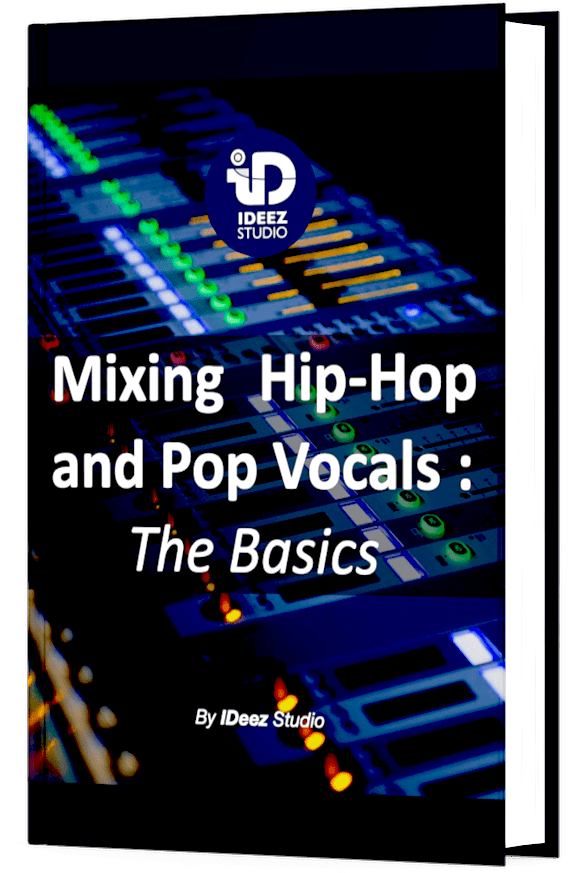This is the eternal debate in vocal mixing: EQ before or after compression? Does it really matter? In this article, we’ll take an in-depth look at what’s best depending on the situation.

There is no ultimate truth to answer this question. What we must keep in mind is the difference in sound results that occur depending on the order chosen. Generally speaking, EQ after compression will produce a cleaner, more accurate sound, while EQ before compression produces a warmer, fuller sound. But why this difference? And how do I choose what is ideal for the song I am working on?
A good way to find the sound you want without relying too much on theory is to compare the sound results directly in your DAW.
But this way of working can be time consuming. There are some tips that can help you make quicker decisions.
Comparison and analysis
From theses vocals:
Here’s the sound result by choosing…
EQ Before Compression
EQ After Compression
The difference between the two audio clips is pretty obvious. Even if you don’t have a very good ear, a difference is noticeable.
This means one thing: choosing a certain order between these two audio treatments already allows to make decisions very early in the process. Choosing the “wrong” order can be totally counterproductive to what you’re looking for through your mix.
Let’s analyze this a bit more closely.
Need a professional sound engineer specializing in pop and hip-hop mixing ? Great! Take a look at our services and let’s blow up your career together!
Let’s start now!
A. EQ Before Compression
For some people, it seems totally wrong to think that a compressor can drastically change the color, tone and frequency spectrum of an audio source. But that’s exactly what happens: the source becomes super warm.
But on the other hand, the vocals are not very accurate at the top of the spectrum. It’s as if the lower end of the frequency spectrum slightly masks all the higher audio information.
What also jumps out is the fact that the “EQ before compression” source sounds closer to the original vocals. It sounds more natural and less processed than the other. This phenomenon can be explained by the fact that, in this order (EQ before compression), you are compressing an EQed signal. In other words, you reduce the dynamic range of the frequency changes in your EQ.
To illustrate this principle, it is as if you were going from this:

To this:

The changes in the frequency spectrum are “crushed” and therefore less notifiable and closer to the original vocals.
The final element that differentiates the two audio clips is the transparency of the compressor. In the first clip, the compressor seems to be very transparent and not very noticeable. This can be a big advantage in some situations.
✅ PROS ✅
✅ Warmer vocals
✅ Natural sound result
✅ Transparent compression
❌ CONS ❌
❌ Lack of precision
❌ Lack of character
B. EQ After Compression
When you listen carefully to the two audio clips, you can clearly hear a very noticeable difference in both frequency and dynamic range. Let’s analyze this a little further.
The first thing that jumps out when comparing this audio clip to the first one is the accuracy of the frequency spectrum. Compared to the “EQ before compression” clip, the clarity and precision of the vocals is quite obvious.
But behind every advantage there is always a little flaw. In this case, it is the loss of warmth in the low end of the spectrum. Indeed, we feel the vocals much less warm and less close to the listener. They will already take a more distant place in the mix.
As for the compression, it seems much more obvious than in the first audio clip. But in the world of pop, that can become a huge advantage. Indeed, the compression already gives power to the vocals while we are only at the beginning of our vocal chain. Pop music fans are always very fond of this kind of compression without knowing it.
But where does this precision come from that makes the strength of this “EQ after compression” clip?
In fact, it comes from the fact that, by placing the EQ after the compressor, the frequency spectrum modifications will naturally be more precise than if you had placed it before.
Indeed, as you are processing the frequency spectrum of a source whose dynamics have been reduced by the compressor, your spectral modifications will be very precise. In fact, it is as if you were favoring your EQ over your compressor.
✅ PROS ✅
✅ Super accurate sound result
✅ Powerful vocals
✅ Enhances clarity
❌ CONS ❌
❌ Lack of warmth in the bass range
❌ Less transparency in the dynamics
So… What Should I Choose?
The pros and cons list should already help you make choices for your future mixes. Depending on your needs, referring to this article should push you in one direction or another.
Also keep in mind that the choice of order between compression and EQ will ALWAYS depend on the mix situation you are in. After reading this article, you will most likely develop a preference for one or the other, but don’t always use the same order just on principle. That can kill creativity.
In my opinion, the main element that will guide your choice is your level in music mixing. If you are a beginner, I advise you to choose the “EQ after compression” order. This will allow you to work more accurately and instinctively.
The musical genre and mood are also important. For genres like pop, hip-hop or rock, I would advise you to choose the “EQ after compression” order. For softer and quieter vibes like soul music, I would recommend the “EQ before compression” order to bring out the warmth of the vocals.
The last element to consider is simply your personal taste. Do you prefer powerful and clear vocals or rather warm and soft? In your vocal mixes, do you generally favor the transparency of the vocals or on the contrary the energy of the compressor?
There are a lot of questions that can be asked when making a choice. But don’t over-complicate things either, follow your instinct!
If you have any question about this topic or anything in field of music mixing, please contact me! I’m always very happy to help!
Related Articles:
My favorite tools for mixing pop and hip-hop music:
Plugins
In the field of auto-tune, I’m convinced that nothing’s better and more efficient than Antares Auto-Tune Pro. As for the EQ’s, FabFilter Pro-Q3 and Slate Digital Infinity EQ are, in my opinion, the best tools. For compression, I have 2 favorites plugins: Waves RComp and UAD EL8 Distressor.
As for reverb, I’m a big fan of the Soundtoys Little Plate, but generally, I go for the Valhalla VintageVerb for its versatility. I also love the Arturia Rev PLATE-140 and the UAD Pure Plate for its organic side.
Headphones
The closed headphones I love and will always love using for mixing pop and hip-hop music are the Beyerdynamic DT-770. As for the best open-back headphones, I use the Sennheiser HD600 headphones, and I’m really happy of them!
Monitors
Having a pair of Yamaha HS7 in its studio or home studio is always cool for more excitement while listening to your mixes. The Adam Audio T7V monitors are also super accurate. In my studio, I also have a pair of Genelec 8030 for their reliability.
Hardware gear
For anyone who wants to start using hardware in their mixes, I always recommend these 2 units from Klark Teknik: the EQP-KT and the 76-KT. Don’t forget to use good converters, such as the Apollo interfaces. This is essential for a good rendering.






